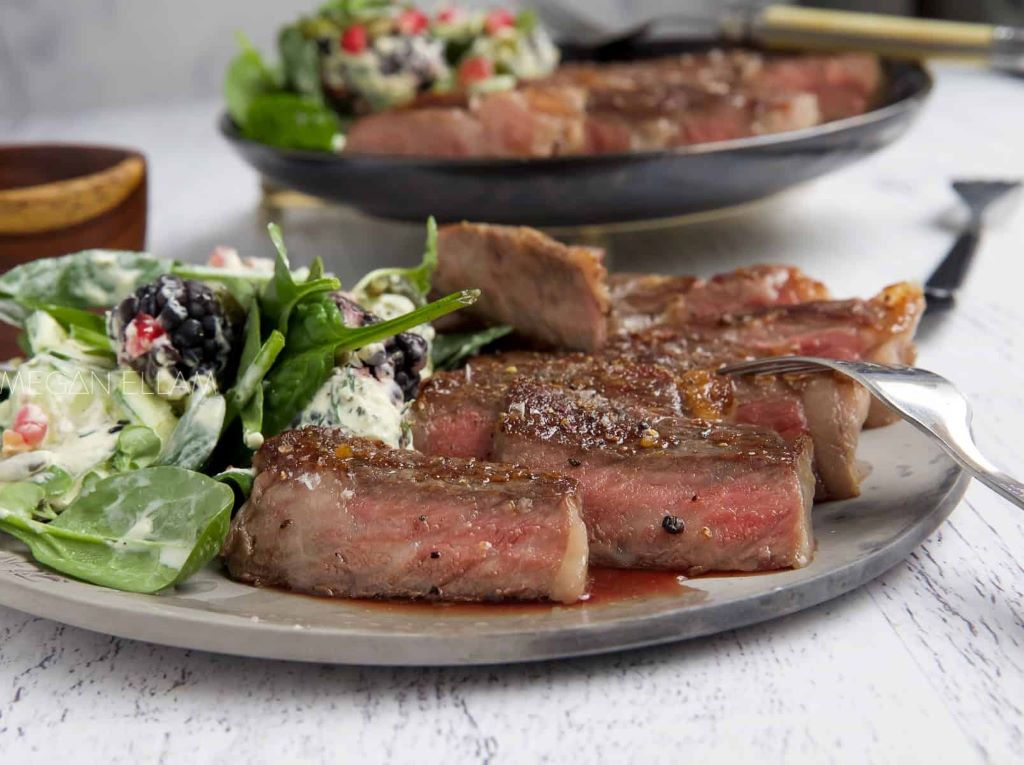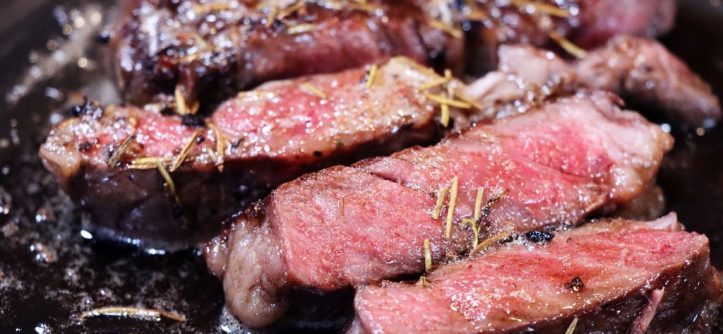Purchasing a cut of genuine A5 Wagyu beef is not just buying dinner; it is an investment in a world-class culinary experience. This Japanese beef, with its intricate, snowflake-like marbling, promises a buttery, melt-in-your-mouth texture that is unlike any other steak in the world. It is the pinnacle of luxury, a standard of quality celebrated by culinary experts globally, much like the authentic dining experiences found at the Houston Bamboo House. However, this exceptional quality brings with it a significant challenge: the fear of cooking it incorrectly. With a price tag that can easily exceed one hundred dollars per pound, the pressure to achieve perfection is immense.
This is where the problem with traditional cooking methods arises. The legendary marbling of A5 Wagyu, known as sashi, is composed of intramuscular fat with an incredibly low melting point. This fat can begin to render at just room temperature. This low melting point is the single biggest challenge. In fact, most online guides dedicated to a5 wagyu how to cook focus on high-heat, fast-searing methods. While effective, this technique leaves absolutely no room for error. A few seconds too long on the pan, and that precious, expensive fat renders out completely, leaving you with a dry, tough, and heartbreakingly average steak. Therefore, a method that offers total control is not just preferable; it is essential.
This article will explore the ultimate solution for guaranteeing a perfect A5 Wagyu experience every time: the sous vide bag technique. This method removes all the guesswork, protects your investment, and ensures the steak is cooked to the precise temperature you desire from edge to edge.
Understanding Why Sous Vide is Superior for A5 Wagyu
Sous vide, a French term meaning “under vacuum,” is a method of cooking where food is placed in a sealed bag and cooked in a precisely controlled water bath. An immersion circulator heats and moves the water, maintaining a specific temperature with pinpoint accuracy.
So, why is this technique the secret weapon for A5 Wagyu?
It is impossible to overcook the interior. The primary danger of cooking Wagyu is exceeding its target temperature. If you want your steak medium-rare (around 135°F), you set the water bath to 135°F. The steak can stay in that water for hours, and it will never go above that temperature. This eliminates the stress and guesswork of pan-searing.
It provides perfect edge-to-edge consistency. A traditionally seared steak develops a “gray band” of overcooked meat just below the crust. Sous vide cooks the entire cut of beef to the same perfect level of doneness, from the very center right to the edge.
It perfectly renders the delicate fat. Instead of violently melting the fat with high heat, the gentle, consistent temperature of the sous vide bath slowly and beautifully renders the sashi. This allows the fat to liquefy and baste the muscle fibers from within, creating an impossibly tender and flavorful steak. The fat stays in the steak, not in the pan.
It separates the cooking process from the searing process. With sous vide, the steak is fully cooked before it ever touches a hot pan. The final sear is purely for creating a delicious, caramelized crust (the Maillard reaction). This means you can focus on getting a perfect crust in 30-60 seconds without worrying about the internal temperature.
The Complete Guide: A5 Wagyu Sous Vide Bag Technique
This step-by-step process will guide you from preparation to plating, ensuring a flawless result that honors the quality of your A5 Wagyu.
What You Will Need
- An A5 Wagyu steak (Ribeye, Striploin, or Sirloin are popular)
- A sous vide immersion circulator
- A large pot or container for the water bath
- A vacuum sealer and bags (or high-quality, BPA-free resealable bags)
- A heavy cast-iron skillet or a searing torch
- High-quality flaked sea salt
- Paper towels
Step 1: Preparation and Seasoning
Your A5 Wagyu steak should be fully thawed. Remove it from the packaging and pat it completely dry with paper towels. A dry surface is critical for getting a good sear later.
When it comes to seasoning, less is more. The flavor of A5 Wagyu is delicate and complex. You do not want to overpower it. A simple, light coating of high-quality flaked sea salt is all you need. Avoid pepper for now, as it can burn and become bitter during the high-heat searing process. You can add fresh-cracked pepper just before serving if you wish.
Step 2: The Bagging Technique
This is the “sous vide bag” part of the process, and it is crucial. The goal is to remove all air from the bag. Air pockets will cause the bag to float and lead to uneven cooking.
If using a vacuum sealer: This is the easiest and most effective method. Simply place the seasoned steak in the vacuum sealer bag, ideally in a single layer. Seal the bag according to your machine’s instructions.
If using the water displacement method: This technique uses the pressure of the water to force air out of a standard resealable bag.
- Place your seasoned steak in a high-quality, zip-top freezer bag.
- Seal the bag almost all the way, leaving just a small one-inch opening at the corner.
- Slowly and carefully lower the bag into your container of water.
- As the bag submerges, the water pressure will push all the air out through the small opening.
- Once all the air is out and the bag is tight around the steak, seal the final corner of the bag.
You can use a small clip to secure the top of the bag to the side of your container, ensuring it stays fully submerged.
Step 3: The Water Bath (Time and Temperature)
This is where the magic happens. The temperature you choose is a matter of personal preference, but for A5 Wagyu, we are balancing doneness with fat rendering.
Recommended Temperature: 130°F to 135°F (54°C to 57°C)
This range is the sweet spot for medium-rare. It is warm enough to beautifully render the intricate fat, making it luscious and tender, but not so hot that it melts and flows out of the steak. Cooking at a lower temperature (like 125°F) might result in fat that is still waxy and firm, which is not the desired texture.
Set your immersion circulator to your chosen temperature. Once the water is preheated, gently lower your sealed bag into the water bath.
Cooking Time: 1 to 2 hours
Unlike tough cuts of meat that need many hours in the sous vide to break down connective tissue, A5 Wagyu is already incredibly tender. The cooking time here is not about tenderizing; it is simply about bringing the steak up to the target temperature and allowing the fat to render. One hour is typically sufficient for a steak up to 1.5 inches thick. Two hours will not harm it and can help render the fat even more luxuriously.
Step 4: The Post-Bath Chill (Optional but Recommended)
Once your timer goes off, remove the bag from the water bath. At this point, the steak is perfectly cooked. However, it is also very hot. If you try to sear it now, the internal temperature will continue to rise, overcooking the interior you worked so hard to perfect.
The solution is an ice bath. Prepare a large bowl of ice and water. Submerge the sealed bag in the ice bath for 10 to 15 minutes. This rapidly chills the exterior of the steak while leaving the center perfectly warm and medium-rare. This step gives you a crucial buffer, allowing you to sear the steak at an extremely high temperature for a longer time to build a fantastic crust.

Step 5: The Sear (The Final Finish)
This is the final, dramatic step. Your goal is not to cook the steak, but to create a dark, flavorful crust through the Maillard reaction.
- Remove the steak from the bag. It will look unappetizing (likely a pale gray color). This is normal.
- Inside the bag, you will find liquid gold: the rendered Wagyu fat. Pour this fat into your cast-iron skillet.
- Pat the steak extremely dry with paper towels. I cannot overstate this. Any moisture on the surface will create steam and prevent a crust from forming.
- Heat your cast-iron skillet (with the rendered fat in it) over the highest heat possible. You want it smoking hot.
- Gently lay the steak in the pan, pressing down slightly.
- Sear for 30 to 60 seconds per side. You are looking for a deep, golden-brown crust. Do not forget to sear the edges of the steak as well; hold it with tongs and roll it along the pan.
- If you are using a searing torch, place the steak on a wire rack and pass the flame evenly over the surface until the crust is formed.
Serving and Savoring Your Perfection
Once seared, transfer the steak to a cutting board. Unlike traditionally cooked steaks, a sous vided steak does not need to rest. It is ready to be served immediately.
Because A5 Wagyu is so incredibly rich, it is not meant to be eaten like a typical 12-ounce steak. It is best enjoyed in small, deliberate portions.
Slice the steak against the grain into thin strips, about a quarter-inch thick. Serve it simply. A small pinch of the flaked sea salt, perhaps a tiny dab of real wasabi, or a light touch of shoyu (Japanese soy sauce) is all that is needed. Avoid heavy steak sauces, as they will completely overwhelm the delicate, nuanced flavor of the beef.
Pair it with simple sides, such as steamed white rice or lightly sautéed mushrooms, to allow the Wagyu to be the star of the show.
Conclusion: The Ultimate Way to Cook A5 Wagyu
The question of “a5 wagyu how to cook” is one that plagues many culinary enthusiasts who have invested in this remarkable ingredient. The fear of failure is real. However, the A5 Wagyu sous vide bag technique is the definitive answer. It is a modern, scientific approach that provides a level of precision and control that traditional methods simply cannot match.
By separating the cooking from the searing, this technique guarantees a perfectly cooked, edge-to-edge medium-rare steak. It ensures the priceless, intricate marbling renders beautifully, infusing every bite with flavor rather than being lost to the pan. It removes the stress and guesswork, allowing you to confidently prepare one of the world’s most luxurious foods and deliver a perfect, restaurant-quality result every single time.
Frequently Asked Questions (FAQs)
-
Can I sous vide a frozen A5 Wagyu steak?
Yes, you can. You do not need to thaw it first. Simply add approximately 30 to 45 minutes to your total cooking time in the water bath to allow the steak to thaw and come up to temperature.
-
What’s the absolute best temperature for A5 Wagyu sous vide?
While it is subjective, most chefs agree that 133°F (56°C) is a fantastic target. It is high enough to render the fat beautifully, making it soft and buttery, without pushing the steak toward a medium doneness.
-
Do I really need a vacuum sealer for this technique?
No, a vacuum sealer is not strictly necessary. The water displacement method (using a high-quality, zip-top bag) works very well. The most important thing is to remove all the air so the bag does not float.
-
How long can I leave A5 Wagyu in the sous vide?
Because A5 Wagyu is so tender, it is not recommended to leave it in the water bath for extended periods (like 4+ hours). While it will not overcook in terms of temperature, the texture can eventually become somewhat soft or “mushy.” Stick to the 1-to-2-hour window for the best results.
-
Is it safe to cook Wagyu at such a low temperature?
Yes, it is perfectly safe. Cooking at a temperature of 130°F (54.4°C) or higher for a sufficient amount of time (pasteurizes) the meat, killing any potential bacteria. The 1-to-2-hour cook time is more than enough to ensure it is completely safe to eat.
Related Topics:
Worried About Bad Pork? Here’s How to Know If Pork Is Bad
Crafting a Kitchen, That’s As Beautiful as it Is Efficient



